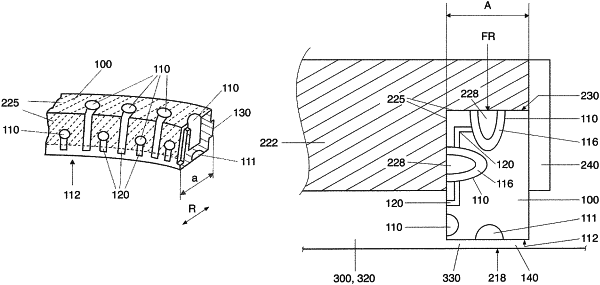| CPC B21B 31/074 (2013.01) [F16C 13/02 (2013.01); F16C 2322/12 (2013.01); F16J 15/164 (2013.01); F16J 15/441 (2013.01)] | 17 Claims |

|
1. A rolling stand (200), comprising:
at least one roller (210) with two roll journals (212) and a roller body (214) for rolling a rolled material;
at least one chock (220) for rotatably supporting the roller (210) in the rolling stand (200),
wherein the chock (220) forms a receiving opening for receiving one of the roll journals (212),
wherein an inner diameter of the receiving opening is larger than an outer diameter of the roll journal in such a manner that, between the chock and the roll journal an annular gap (300) for receiving a lubricant (320) is formed; and
a seal for sealing the annular gap, which represents a lubricant space of a bearing, at least in a predetermined circumferential angular range, arranged in a non-rotatable manner relative to the rotatable roller at an end proximal to the roller body and/or at an end remote from the roller body of the chock (220);
wherein the seal (100) is at least partially formed from an elastic material,
wherein the seal has at least two cavities (110) which are separated from each other in a circumferential direction and which are independently open towards the lubricant space of the bearing for feeding the lubricant (320) from the lubricant space (300) of the bearing to be sealed into the cavities whereby the at least two cavities (110) can expand independently depending on different lubricant pressure in each of the at least two cavities (110),
wherein a groove (230) that is open towards the roll journal (212) and into which the seal (100) can be inserted is formed at the end proximal to the roller body and/or at the end remote from the roller body of the chock (220).
|